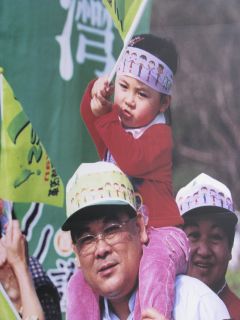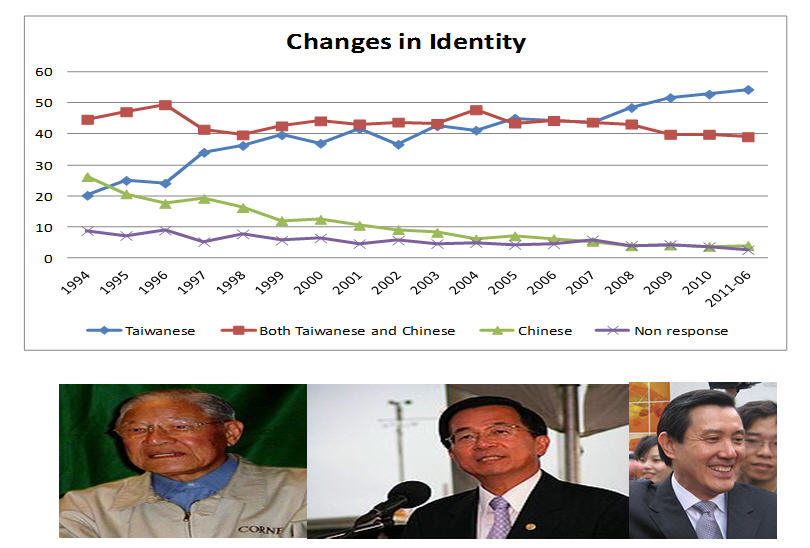Taiwan is developing a common Taiwanese identity and the two former presidents moved Taiwan towards a common Taiwanese identity in their own fashions. The current Chinese KMT government has departed from this historical trend by conducting a much stronger Chinese identity policy. Therefore, we are witnessing a worrying and widening gap between the identity of the government and the population.
By Michael Danielsen, Chairman of Taiwan Corner
I have been visiting Taiwan for more than 10 years but 10 years ago I landed in Chang Kai-shek Airport and not in Taoyuan International Airport. As you all know, I am talking about the same airport. Only the name has changed. Does such a change of name matters? It matters and it has a great impact on each traveler visiting Taiwan. And it matters because people notice the name and the name tells the visitors a story about Taiwan.
In the first story, the international traveler arrives at Chang Kai-shek International Airport and associate the airport’s name with the China’s Civil War and China. In the second story, the traveler meets Taoyuan city located close to Taipei, and he or she is told a story about a city where many Taiwanese live, work or commute to Taipei in the mornings for work.
This change of the name is identity policy at work every day, and it has an impact on each traveler to and from Taiwan.

Development in Identity during the presidents Lee, Chen and Ma
Taiwan has had a stable development in the Taiwanese identity in the sense that the two former presidents have moved Taiwan towards a common Taiwanese identity in their own fashions.
Over the last 4 years the current Chinese KMT government has departed from this historical trend by conducting a much stronger Chinese identity policy combined with a focus on the constitution of the Republic of China (ROC). It is my impression that this policy penetrates almost all policy areas.
Consequently, this is slowly having a greater impact on the life of ordinary Taiwanese, and on how the international community is perceiving Taiwan.
Let me concentrate on how the Chinese identity policy is influencing Taiwan domestically and how this runs the risk of creating a growing internal conflict.
President Ma’s identity policy since 2008
Ma has departed from the historical trend toward a common Taiwanese identity from the very beginning. Ma Ying-jeou made it very clear in his inaugural address that he would change the identity policy to a Chinese identity policy.
He used the ethnically loaded term “zhonghwa minzu” or “ethnic Chinese” instead of the more embracing term “huaren“ as former president Chen. He continued by placing strong emphasis on the ROC constitution by referring to himself as what some perceive as president of China and Taiwan. He has also put strong emphasis on Chinese culture in public schools and he honored the yellow emperor.
Most recently, in the 2012 New Year speech, he talked about the struggles in China before 1949.
Internationally, Taiwan has stopped trying to become full membership of UN and some will argue that ECFA (the recent trade agreement between Taiwan and China) damaged Taiwan’s international trade status because it was not signed as a members of the World Trade Organization(WTO) and Taiwan’s participation in the World Health Organization has diminished.
Thus, President Ma’s national Chinese national identity coexist with a deeper economic integration with China. So in parallel we find a Chinese identity and a deeper integration with China. This policy appears to have no impact on the historical trend towards a common Taiwanese identity. The Chinese identity has almost not changed and find support from only 4.1% of the population. The Taiwanese identity has increased over the last 20 years and also during the presidency of Ma.
The consequence of a Chinese National Identity Policy
As a consequence, we are witnessing a widening gap between the identity of the government and the population.
The gap becomes wider when you consider that the Taiwanese are moving towards a common identity. Also, data reveals that the all Taiwanese and interestingly a vast majority of those coming after from 1949 including their decedents consider Taiwan as their home and have accepted a dual identity.
One conclusion in my chapter “On the Road to a Common Taiwanese Identity” in the book “National identity and Economic interests” [1] that was published in February 2012 is that the Taiwanese are moving toward a common Taiwanese identity allowing both Chinese, Taiwanese and dual identity to exist and they consider Taiwan as their home with the current physical borders.
If this trend toward a common identity shall succeed it requires harmony between the national identity and the identity of the population. Ma is therefore creating a gap between the population and the government. This can lead to disharmony and lack of enjoyment of differences and hurt the trend towards common identity:
As Bhikhu Parekh [2] says:
if “the minorities feel threatened, besieged, fearful of losing their culture, they turn inward, become defensive, and tend to avoid all but the minimum of contact with the rest of society. This is equally true of the majority. If it feels that it is no longer in charge of its future, and that its way of life is subjected to relentless erosion, it becomes defensive and intolerant, and either closes its doors”.
This is a development that the Taiwanese politician should avoid.
[1] Chow, P. C.Y.(2012). National Identity and Economic interest. New York: Palgrave Macmillan.
[2] Parekh, B. (2008). A New Politics of Identity. New York: Palgrave Macmillan.
This is article was a part of the talk given at the conference “Reframing the “ROC”-History, Politics, Constitutionalism & Political Symbolism in the Reconceptualization of the Republic & Cross-Straits Relations” at the Research Center for Humanities and Social Sciences, National Chiao-Tung University. This article focuses on the consequences of the national Chinese identity policy in Taiwan by the KMT government. A later article will focus on the international consequences.





